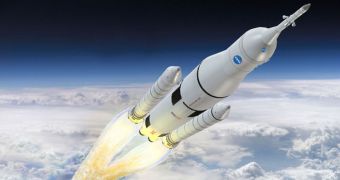The 2013 National Space Transportation Policy was released by the Barack Obama Administration on Thursday, November 21. The document outlines the policies and steps that the National Aeronautics and Space Administration will take over the next couple of decades in conducting space exploration.
The document seeks to preserve the global leadership role that the United States has in spaceflight and space exploration, though this is arguably not the case anymore. Ambitious space agencies, such as the ones in Europe, India and China could soon become dominant in this field, primarily due to lack of funding for NASA.
The guidelines featured in the new document call for NASA to continue funding private spaceflight companies as it has done over the past few years. The plan is to use federal funds to develop spacecraft for exploring low-Earth orbit and the Moon, and for resupplying the International Space Station (ISS).
At the same time, NASA is to continue developing its own spacecraft/rocket combo, consisting of the Orion Multipurpose Crew Vehicle (MPCV) capsule and the Space Launch System (SLS), a heavy-lift rocket. These two vehicles are to take NASA astronauts to Mars by the mid-2030s.
“The development of a commercial space sector for low-Earth orbit transportation is freeing NASA to develop a heavy-lift launch capability to travel further into space than ever before,” NASA Administrator Charles Bolden wrote in a blog post after the new Policy was released.
“NASA has already made steady progress on the development of the next-generation heavy-lift launch vehicle, the Space Launch System (SLS) [and] is also well on its way to developing the Orion crew capsule, which will take astronauts further into deep space than humans have ever explored,” he added.
At this point, NASA is funding the development of private spacecraft built by Space Exploration Technologies Corporation (SpaceX), the Boeing Company, and the Sierra Nevada Corporation. The agency hopes that at least one of these vehicles will be available for manned trips to space by 2017, Space reports.
NASA has to place a manned crew on the surface of a near-Earth asteroid by 2025, according to presidential directions. No more than 10 years later, it has to set the first human astronauts on Mars. These ambitious plans are highly dependent on the Orion and the SLS, which are scheduled to fly together for the first time no earlier than 2018.
The entire 2013 National Space Transportation Policy is available at this link.

 14 DAY TRIAL //
14 DAY TRIAL //